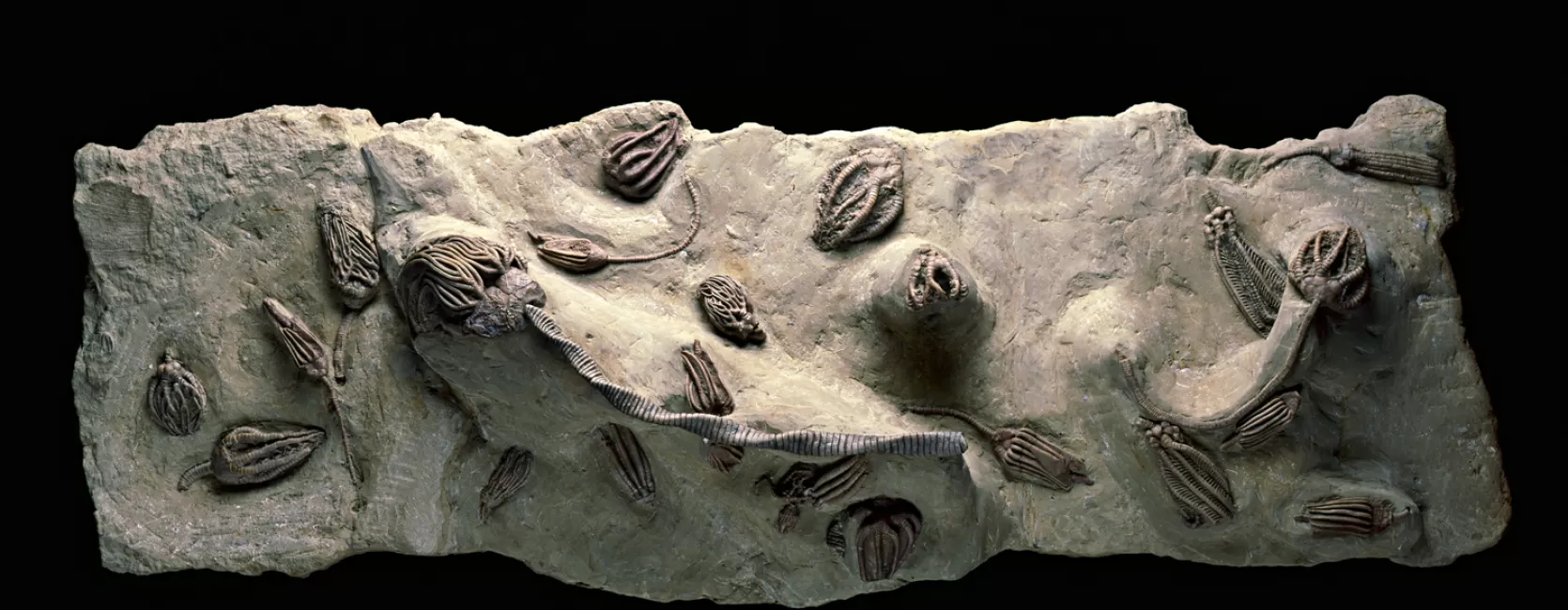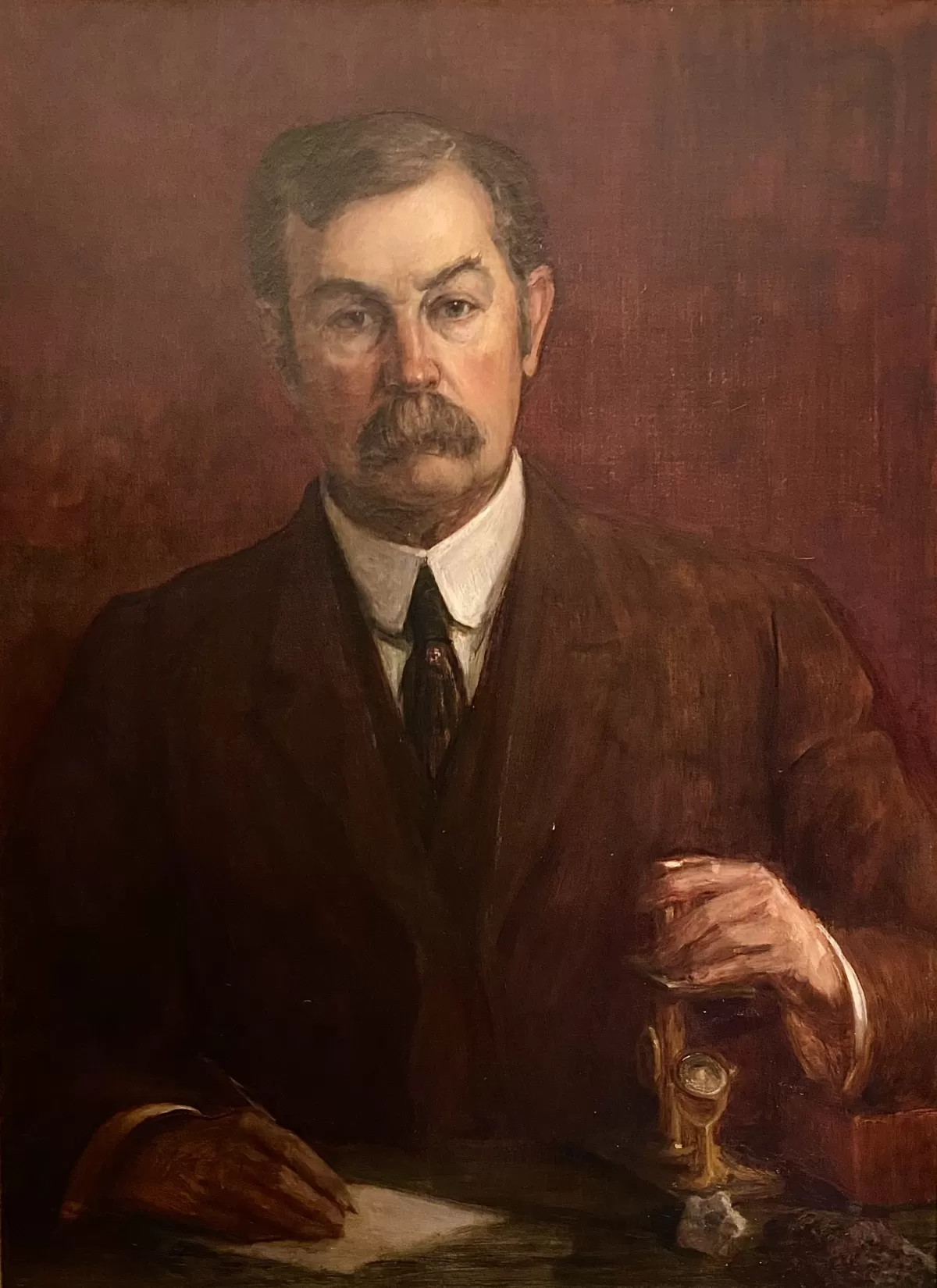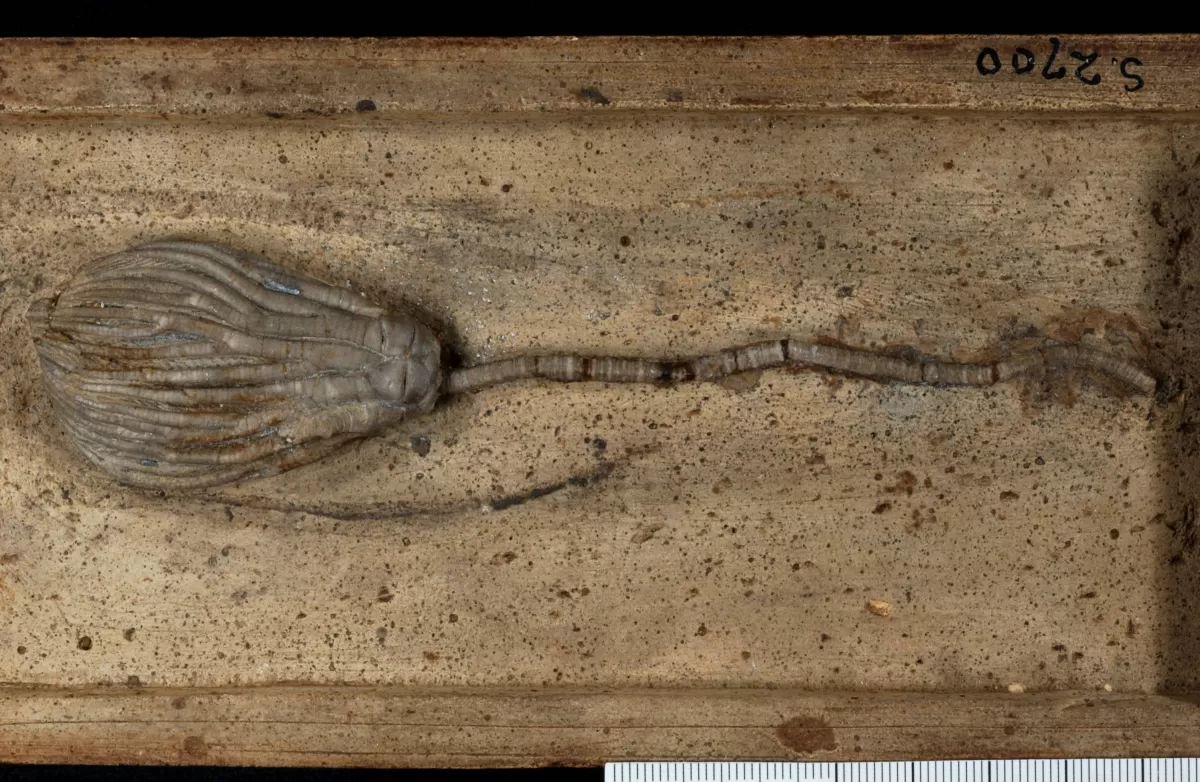Image



The Smithsonian Museum of Natural History's Springer Collection of echinoderms is the largest repository of fossils crinoids in the world. Housed in the Department of Paleobiology, it consists of nearly 4,500 primary type specimens, including 1,678 holotypes, mostly from Paleozoic sequences in North America and Europe. In addition to the primary types there are more than 100,000 secondary types derived from all parts of the world.
Most of the Museum of Natural History's fossil echinoderm collection, and the large library associated with it, were donated by Frank Springer in 1911. Springer was a lawyer and businessman who spent most of his life in Santa Fe, New Mexico and was widely known for his leadership in resolving major land grant disputes in the southwest and his influence on New Mexico's early economic development. His name is familiar to paleontologists, however, because of his interest in crinoids that began at an early age from his collecting visits to the Burlington Limestone, which was about 30 miles south of his boyhood home of Wapello, Iowa. His questions about the taxonomy of the Burlington crinoids led to his association with Charles Wachsmuth, who had long been doing research on fossil crinoids while making a living as a shopkeeper in Burlington. Their mutual interest and friendship led to a 20-year collaboration that included a series of classic monographs and taxonomic papers published between 1877 and 1897. Springer continued publishing highly regarded papers on Paleozoic crinoids from North America Europe until his death in 1927.

Wachsmith and Springer had invested a great deal of time and personal funds to prepare and curate their combined collection and library. To be sure that the collection would not be divided or neglected, Springer donated the collection to the Smithsonian Institution, which had just completed building the most fireproof natural history museum in North America. In July, 1911 269 boxes and crates weighing 24,500 pounds were loaded in "a fine steel express car having springs like those of a Pullman" and shipped from Burlington to Washington. Springer also provided a generous endowment to ensure continued upkeep of the collection, which is available for study by "investigators of recognized standing in any branch of the Echinoderms, and in accordance with the regulations of the National Museum".
For more information on the life and research contributions of Frank Springer see the memorial written by Charles Schuchert (1927, Geological Society of America Bulletin, v. 39, p. 65-80).